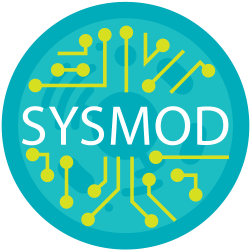- Jonathan Karr, Icahn School of Medicine at Mount Sinai, United States
Presentation Overview: Show
Accurate, predictive models are needed to help physicians deliver the best therapy for each patient. Toward predictive models that help physicians diagnose and treat patients, this session will highlight recent progress in modeling the development, evolution, and drug treatment of cancer and infectious disease.
- Andre Levchenko
Presentation Overview: Show
Biological processes are highly variable, with individual cells capable of adopting distinct states and dividing roles within complex and structured populations. Furthermore, individual cells can also transition between different states as they perform complex functions. Here, using the example of invasive cancer spread, I introduce a new model and new analysis method, allowing one to characterize how inherent cell variability translates into a choice among several available phenotypes, and how the dynamic switching between these phenotypes allows individual cells to undergo dynamically complex processes. I will how such single cell behavior can result in a successful search by cancer cells for lymphatic or blood vessels, and initiation of metastasis. I will also suggest that this method can be broadly translated to other biological phenomena involving complex decision making on cell and population levels.
- Meghna Verma, Virginia Tech, United States
- Josep Bassaganya-Riera, Virginia Tech, Landos Biopharma Inc., United States
- Andrew Leber, Landos Biopharma Inc., United States
- Nuria Tubau-Juni, Virginia Tech, United States
- Vida Abedi, Geisinger Health System, United States
- Xi Chen, Virginia Tech, United States
- Stefan Hoops, Virginia Tech, United States
- Raquel Hontecillas, Virginia Tech, Landos Biopharma Inc., United States
Presentation Overview: Show
Background: Helicobacter pylori, although, known to cause gastric cancer in 1-2% of cases, exerts beneficial effects including protection against allergies and gastroesophageal diseases. Motivation: To examine the double edge sword of H. pylori as a pathogen and a beneficial organism, and investigate the immunoregulatory responses during H. pylori infection we utilized a high-performance computing (HPC)-driven ENteric Immunity SImulator (ENISI).
Method: The multiscale model simulated (> 10^[7]cells) of the gut mucosal immune system. We performed simulations integrating various spatiotemporal scales encompassing ABM- (tissue), ODE- (cellular) and partial differential equation- (cytokine gradients) based methods. The modeling data were analyzed by building a metamodel using stochastic-kriging and the design was based on a space filled Latin Hyper Cube matrix. A spatiotemporal metamodel-based variance and partial rank correlation coefficient-based regression type sensitivity analyses was conducted to analyze the parameters influencing the initiation, peak and recovery stages of the infection.
Results: The data analytics methods identified the parameters related to epithelial cell death and epithelial cell proliferation validating the findings from the experiment models, and highlighted the crucial role of IL-12 in influencing the host responses to infection.
Conclusion: Thus, the ENISI identified factors critical for the survival of H. pylori and lesion development.
- Kazunari Iwamoto, Osaka University, Japan
- Hiroaki Imoto, Osaka University, Japan
- Shigeyuki Magi, Osaka University, Japan
- Suxiang Zhang, Osaka University, Japan
- Mariko Okada-Hatakeyama, Osaka University, Japan
Presentation Overview: Show
Dysregulation of signaling network is a major cause of human cancer. Behavior of this network is highly nonlinear, therefore a prediction of drug responses targeting this network is very difficult. To solve this problem, we currently develop a mathematical model based on the experimental data obtained from four cancer subtypes, integrating the growth factor receptor signaling pathways, early transcriptional regulation, cell cycle and p53 regulatory networks, which allows us mechanistic re-classification of cancer subtypes and prediction of combinatorial drug effects. One of the challenges of this modeling approach is a large-scale parameter estimation. To minimize the estimation efforts, we also develop quantitative experimental methods to infer cell cycle stages and heterogeneic cellular responses from high-content imaging data. Using the model, we found that the most of the signaling dynamics and molecular machineries are commonly shared in different cancer subtypes, yet there exist unique molecular regulations specific to particular subtypes. Our model will be able to integrate clinical gene/protein expression data in public databases as model parameters to predict cancer malignancy.
- Neil Coleman, Rutgers University, United States
- Anchal Sharma, Rutgers University, United States
- Greg Riedlinger, Rutgers University, United States
- Subhajyoti De, Rutgers University, United States
Presentation Overview: Show
Cancer is a complex disease marked by somatic evolution of clonal cell population, which can grow for decades and yet only becomes symptomatic at a relatively advanced stage. During diagnosis histopathological and molecular assessment essentially provides only a late and limited snapshot of this evolutionary process. Common experimental model systems such as in vitro systems or mouse models do not always adequately capture the multi-scale complexity of spontaneously developed human tumors - which is typically marked by long latency period and intra-tumor heterogeneity. We have developed Temish, a computational model of tumor evolution based on principles of stochastic reaction diffusion system in the 3D that enables generating testable hypotheses regarding aspects of tumor evolution. The model is fast, scalable to capture tumor growth dynamics during tumor initiation, progression, and during treatment. We validate utility of the model by comparing testable predictions with histopathological data. We then apply the model to lung cancer and compare the model predictions with single and multi-region sequencing data to infer modes of cancer progression and their clinical implications. We suspect that regional differences in subclonal driver mutations, coupled with ongoing genome instability and clonal dynamics present challenges for successful intervention of non-small cell lung cancer.
- Beste Turanli, Science for Life Laboratory, KTH - Royal Institute of Technology, Sweden
- Alen Lovric, Science for Life Laboratory, KTH - Royal Institute of Technology, Sweden
- Rui Benfeitas, Science for Life Laboratory, KTH - Royal Institute of Technology, Sweden
- Gholamreza Bidkhori, Science for Life Laboratory, KTH - Royal Institute of Technology, Sweden
- Cheng Zhang, Science for Life Laboratory, KTH - Royal Institute of Technology, Sweden
- Kazim Yalcin Arga, KTH - Royal Institute of Technology, Sweden
- Adil Mardinoglu, Science for Life Laboratory, KTH - Royal Institute of Technology, Sweden
Presentation Overview: Show
Insights yielded from genome-scale metabolic models (GEMs) providing information on cancer-specific metabolism have been used for identifying potential therapeutic agents and drug targets. Moreover, repositioning drug for any cancer has utmost importance in the context of drug discovery. We aimed to reconstruct a generic prostate cancer (PRAD) specific model for not only exploring the metabolism but also repurposing new therapeutic agents. RNA-Seq data for 495 individuals suffering from PRAD as well as 52 noncancerous prostate samples from The Cancer Genome Atlas database and proteome data from the Human Protein Atlas v18 were retrieved. Besides, all personalized GEMs based on PRAD transcriptomes were acquired from the Human Pathology Atlas to reconstruct a generic model covering all individual variations as well as proteome and transcriptome. tINIT and reporter metabolites algorithm via RAVEN toolbox were used to reconstruct the model and identify reporter metabolites, respectively. Differentially expressed genes in PRAD specific metabolic model were used as metabolic signatures for drug repurposing. Gene expression profiles from CMap2 were analyzed and statistically evaluated. Consequently, eleven novel drug candidates were repurposed for PRAD. Reversal effect of drug candidates are still under investigation through PRAD specific GEM.
- Barbara Niederdorfer, Norwegian University of Science and Technology, Norway
- Miguel Vazquez, Norwegian University of Science and Technology, Barcelona Supercomputing Center, Spain
- Liv Thommesen, Norwegian University of Science and Technology, Norway
- Martin Kuiper, Norwegian University of Science and Technology, Norway
- Astrid Lægreid, Norwegian University of Science and Technology, Norway
- Åsmund Flobak, Norwegian University of Science and Technology, Norway
Presentation Overview: Show
Combination therapies are hoped to overcome the challenge of emerging cancer drug resistance by blocking malicious acquired bypass mechanisms. Due to the vast therapeutic space, undirected testing will not suffice to identify effective combinations. Computational network approaches have previously been used to successfully predict effective drug combinations (e.g. Flobak, 2015). Many of these rely on data from perturbation experiments, which is not transferable to a clinical setting. Here we present the use of logical modeling informed by baseline molecular data from unperturbed systems. We manually curated a prior knowledge network of 144 nodes encompassing 19 drug targets, which we experimentally screened in single and double perturbation across eight human cancer cell lines of different origin. Cell-line specific logical models were tailored to agree with transcriptomic and literature curated baseline data. Our in silico modelling experiments suggest that network refinement accounting for subtle biologically founded mechanism increases the models’ predictive capability, and that it is more important to accurately describe activity of nodes with high- rather than low- out-degree. Our work implies that models informed by baseline data could be used to economize screening efforts by enriching screening design for beneficial drug combinations.
- Andreas Dräger, University of Tübingen, Germany
Presentation Overview: Show
Comprehensive models of cells and tissues are needed to help scientists understand the molecular basis of behavior, help physicians diagnose and treat patients, and help engineers rationally design microorganisms. Toward, comprehensive biomodels, this session will highlight progress toward comprehensive models of entire cells and tissues, including emerging models of yeast and the immune system, as well as emerging tools for discovering and aggregating the data needed for large models, emerging methods for automatically inferring the structure of large models, and emerging novel frameworks for large multi-scale models.
- Peter Sorger, Harvard University, United States
- Lucas van der Zee, University of Amsterdam, Netherlands
- Hans Westerhoff, University of Amsterdam, Netherlands
- Jens Nielsen, Chalmers University of Technology, Sweden
- Matteo Barberis, University of Amsterdam, Netherlands
Presentation Overview: Show
Cell cycle and metabolism are coupled networks. Cell growth and division require synthesis of macromolecules which is dependent on metabolic cues. Conversely, metabolites involved in storage metabolism have been observed to fluctuate periodically as a function of cell cycle progression. Computer models of cell cycle and metabolism are being developed for some time. However, to date no effort has been made to integrate, and to investigate the mutual regulation of, these two systems in any organism. Here, we present a multi-scale framework that integrates a Boolean cell cycle model with a constraint-based model of metabolism. Directionality and effect are incorporated for mechanistic interactions. Conversely, an evolutionary optimization algorithm has been developed to generate models that incorporate high-throughput interactions iteratively. Model results are verified against metabolic pathway activity and enzyme concentrations. The first computer model that integrates cell cycle to metabolic networks reveals marked changes in flux distributions through different cell cycle changes, and highlights the importance of storage metabolites for metabolic changes during the growing phase of the cell cycle. Our integrative, multi-scale framework may be employed to capture the mechanistic basis of robustness of cell cycle networks by highlighting metabolic causes of cell cycle arrest.
- Kenneth Wertheim, University of Nebraska–Lincoln, United States
- Bhanwar Lal Puniya, University of Nebraska-Lincoln, United States
- Alyssa La Fleur, Whitworth University, United States
- Ab Rauf Shah, University of Nebraska-Lincoln, United States
- Matteo Barberis, University of Amsterdam, Netherlands
- Tomas Helikar, University of Nebraska-Lincoln, United States
Presentation Overview: Show
The immune system is regulated by biological and biochemical networks integrated across multiple scales (e.g., signal transduction, metabolism, etc). There are networks within each individual cell and at the cell population level. In order to understand the dynamics of the immune system under healthy and diseased conditions, multi-scale models are needed to fully leverage mathematical and computational tools. Herein, we discuss the first step we have taken towards describing the immune system in such a computational, system-level framework, exemplified by a multi-scale model of CD4+ T lymphocytes, including naive, effector (Th1, Th2, and Th17), regulatory, and memory cells. Within this framework, the following scales about CD4+ T lymphocytes are integrated: metabolism (described by constraint-based models), gene regulation and signal transduction (logical model), the population level (agent-based model), and extracellular cytokine concentrations (ordinary differential equations). Furthermore, the framework is oriented in space within three compartments, namely an infection site, a draining lymph node, and the circulatory system. The model was validated by reproducing known phenomena using a Monte Carlo method, including the phenotypic plasticity of CD4+ T lymphocytes, the effects of IL-2 on their proliferation and survival, and the effects of chronic inflammation.
- Peter Karp, SRI International, United States
- Mario Latendresse, SRI International, United States
Presentation Overview: Show
Reaction gap filling is a computational technique for proposing the
addition of reactions to genome-scale metabolic models to permit those
models to run correctly. Gap filling completes a reaction network by
adding reactions that enable biosynthesis of all required metabolic
products from available nutrients. The models are incomplete because
they are derived from annotated genomes in which not all enzymes have
been identified.
We present two studies of gap-filling accuracy. In the first study we
compared the results of applying an automated likelihood-based gap
filler (MetaFlux) within the Pathway Tools software with the results
of manually gap filling the same metabolic model. Both gap-filling
exercises were applied to the same genome-derived qualitative
metabolic reconstruction for Bifidobacterium longum. The MetaFlux gap
filler attained recall of 61.5% and precision of 66.6%. In the second
study we generated degraded versions of the EcoCyc-20.0-GEM model by
randomly removing flux-carrying reactions from a growing model. We
gap-filled the degraded models using several variations of MetaFlux
and compared the resulting gap-filled models with the original
model. The best MetaFlux variation showed a best average precision of
87% and a best average recall of 61%.
- Saahith Pochiraju, Icahn School of Medicine at Mount Sinai, United States
- Yosef Roth, Icahn School of Medicine at Mount Sinai, United States
- Balazs Szigeti, Icahn School of Medicine at Mount Sinai, United States
- Jonathan Karr, Icahn School of Medicine at Mount Sinai, United States
Presentation Overview: Show
Whole-cell (WC) models are needed to guide medicine and bioengineering. These models require data about each gene, RNA, protein, complex, and reaction. Unfortunately, this data is hard to collect because it is scattered across repositories and articles; described with different formats, identifiers, and units; and obtained from different methods, organisms, and conditions.
To accelerate WC modeling, we developed Datanator, an integrated database, search engine, and web interface for data for modeling. The database includes metabolite, RNA, and protein concentrations; protein complex subunit compositions; and rate laws and kinetic constants from ArrayExpress, CORUM, ECMDB, PaxDB, and SABIO-RK. The search engine finds data for modeling specific compounds, reactions, organisms and environments, including data from similar compounds, reactions, organisms, and environments. The web interface helps modelers explore the database.
In addition to using Datanator to build a WC model of Mycoplasma pneumoniae, we have shown that Datanator can find missing parameters for ODE models, augment FBA models with kinetic bounds, and recalibrate models to similar organisms.
We believe that Datanator will accelerate WC modeling, and enable more predictive models. To continue to accelerate WC modeling, we plan to integrate additional data sources into Datanator and integrate Datanator with model design tools.
- Tomas Helikar, University of Nebraska-Lincoln, United States
Presentation Overview: Show
To achieve comprehensive models of entire cells and tissues, we must first build detailed models of each cellular process. This session will highlight recent progress in developing modeling cellular metabolism, transcriptional regulation, and cell cycle regulation. This session will include one keynote talk, one contributed talk, and four short lightning talks that will highlight four posters.
- Ulrike Münzner, Kyoto University, Japan
- Edda Klipp, Humboldt-Universität zu Berlin, Germany
- Marcus Krantz, Humboldt-Universität zu Berlin, Germany
- Tatsuya Akutsu, Kyoto University, Japan
Presentation Overview: Show
Signal transduction networks, such as the cell division cycle, are prone to the combinatorial complexity. While the number of microstates increases exponentially in such a system, the empirical data describing these states tends to be scarce. These two characteristics challenge mathematical descriptions in terms of scalability and data congruence. We developed a large-scale, mechanistically detailed and executable bipartite Boolean network of the cell cycle in Saccharomyces cerevisiae. We based this network on the reaction-contingency language, which scales with and captures the measured elemental states. Analyzing the attractors of this Boolean network enables the study of phenotypes which lead to normal or abnormal growth of a cell. Determining cyclic attractors in such a Boolean network is an NP-hard problem, and hence, cannot be solved exhaustively. We address this challenge by using partial information to reduce the number of trials in a heuristic search. We use this method to study the behavior of a reduced version of the original network. Such an analysis enables us to explore which components in the network control the cyclic behavior of the cell cycle network. In the future, analysis tools for mechanistically detailed Boolean models enable the development of whole-cell models, and ultimately personalized medicine.
- Aditya Pratapa, Virginia Tech, United States
- Neil Adames, Colorado State University, United States
- Pavel Kraikivski, Virginia Tech, United States
- Nicholas Franzese, Reed College, United States
- Jean Peccoud, Colorado State University, United States
- John Tyson, Virginia Tech, United States
- T. M. Murali, Virginia Tech, United States
Presentation Overview: Show
Mathematical models of cellular processes can systematically predict the phenotypes of novel combinations of multi-gene mutations. Searching for informative mutants is challenging since the number of possible combinations grows explosively. Moreover, keeping track of the genetic crosses needed to make new mutants and planning sequences of experiments is unmanageable when there are hundreds of predictions to test.
We present CrossPlan, an algorithm for systematically planning genetic crosses to make a set of target mutants from a set of source mutants. We base our approach on a generic experimental workflow used in performing genetic crosses in budding yeast. CrossPlan uses an integer linear program to maximize the number of target mutants that we can make under certain experimental constraints.
We apply our method to a comprehensive mathematical model of the protein regulatory network controlling cell division in budding yeast. The number of target mutants we can plan increases linearly with the number of batches planned. Interestingly, planning two or three batches at a time is nearly as optimal as planning all batches simultaneously. The experimental flow that underlies our work is quite generic and our algorithm is easy to modify. Hence, our framework should be relevant in mammalian systems as well.
- Gregor Neuert, Vanderbilt University, United States
Presentation Overview: Show
Despite substantial experimental and computational efforts, mechanistic modeling remains more predictive in engineering than in systems biology. The reason for this discrepancy is not fully understood. Although randomness and complexity of biological systems play roles in this concern, we hypothesize that significant and overlooked challenges arise due to specific features of single-molecule events that control crucial biological responses. Here we demonstrate why modern statistical tools to disentangle complexity and stochasticity, which assume normally distributed fluctuations or enormous datasets, don't apply to the discrete, positive, and non-symmetric distributions that characterize spatiotemporal mRNA fluctuations in single-cells. As an example, we integrate single-molecule measurements and advanced computational analyses to explore Mitogen Activated Protein Kinase induction of multiple stress response genes. Through systematic comparisons of the same model to the same data, we elucidate why standard modeling approaches yield non-predictive models for single-cell gene regulation. We further explain how advanced tools recover precise, reproducible, and predictive understanding of diverse transcription regulation mechanisms, including gene activation, polymerase initiation, elongation, mRNA accumulation, spatial transport, and degradation. Our model-data integration approach should extend to any discrete dynamic process with rare events and realistically limited data.
- Benjamin Kellman, University of California San Diego, United States
- Anne Richelle, University of California San Diego, United States
- Nathan Lewis, University of California San Diego, United States
Presentation Overview: Show
Human Milk Oligosaccharides (HMOs) are abundant and functional components of human milk, which impact health and development of the infant. Their biosynthesis in the human mammary gland remains elusive despite nearly half a century of investigation. Here we have developed a framework for resolving ambiguous enzymes and metabolites in this process. Our approach leverages metabolic data to construct metabolic models; models are scored and selected based on their consistency with transcriptomic data. Starting from a generic metabolic network describing all feasible biosynthetic pathways of 34 potential HMO structures related to 16 most abundant (>97% by weight) oligosaccharides found in human milk. Through the integration of HMO glycoprofiling and transcriptomics, our modeling approach identifies the most likely HMO structures for uncharacterized HMOs, the associated biosynthetic reactions for those HMOs, and candidate genes for elongation, branching, fucosylation, and sialylation of HMOs. These results provide the molecular basis for HMO biosynthesis and thus can be used to guide new strategies for HMO synthesis for academic and nutritional use. Most notably, we observer unique metabolic activity as a function of maternal blood-type; the determining glycosyltransferases of which are also believed to influence HMO biosynthesis.
- Carolin Loos, Institute of Computational Biology, Helmholtz Zentrum München, Germany
- Katharina Moeller, University Hospital Cologne, Germany
- Fabian Fröhlich, Institute of Computational Biology, Helmholtz Zentrum München, Germany
- Tim Hucho, University Hospital Cologne, Germany
- Jan Hasenauer, Institute of Computational Biology, Helmholtz Zentrum München, Germany
Presentation Overview: Show
All biological systems exhibit cell-to-cell variability, and this variability often has functional implications. To gain a thorough understanding of biological processes, the latent causes and underlying mechanisms of this variability must be elucidated. Cell populations comprising multiple distinct subpopulations are commonplace in biology, yet no current methods allow the sources of variability between and within individual subpopulations to be identified. This limits the analysis of single-cell data, for example obtained by flow cytometry and microscopy. We present a data-driven modeling framework to analyze cell populations,which comprise heterogeneous subpopulations. Our approach combines mixture modeling and frameworks for distribution approximation, facilitating the integration of multiple single-cell datasets and the detection of causal differences between and within subpopulations. We demonstrated the ability of our method to capture multiple levels of heterogeneity in the analyzes of simulated data and data from primary sensory neurons involved in pain initiation. Our approach predicted relative changes in TrkA and Erk1/2 expression levels but not subgroup composition to underlie increased NGF-responsiveness caused by exposure to different extracellular scaffolds.
- John Tyson, Virginia Tech, United States
Presentation Overview: Show
Well-nourished cells in a favorable environment (well supplied with growth factors and free from stresses, like ionizing radiation) will grow, replicate their genome, and divide into two daughter cells in a process (the “cell division cycle”) that repeats itself like clockwork. The cell division cycle, however, is not a clock: its function is not to measure periods of time but rather to ensure that the information (the genes) and the machinery (the proteins) of life are faithfully transmitted from one generation of cells to the next. Hence, although the processes of growth and division may exhibit a remarkable temporal periodicity, this is an epiphenomenon. The primary goal of the cell cycle is to guard the cell’s genome against damage during the replication/division process, lest the error(s) be irrevocably passed down to all future generations of progeny. Hence, cell cycle progression is closely monitored for errors, in particular DNA damage and misalignment of replicated chromosomes on the mitotic spindle. In this lecture we look closely at the molecular mechanisms that maintain genomic integrity during the cell division cycle, and find an unexpected and intriguing arrangement of concatenated and nested bistable toggle switches that are arranged in a self-perpetuating cycle. The topology of the network seems to play crucial roles in maintaining the stability of the genome during cell proliferation.
Reference: B. Novak, F.S. Heldt & J.J. Tyson (2018). Genome stability during cell proliferation: a systems analysis of the molecular mechanisms controlling progression through the eukaryotic cell cycle. Curr. Opin. Syst. Biol. Vol 9, pp. 22-31.
- Tomas Helikar, University of Nebraska-Lincoln, United States














